LESSON 113: All Aglow: Light Energy
576
THINK ABOUT IT
Light from the Sun travels a great distance through nearly empty space to reach Earth. When the Sun’s light shines on objects, those objects can reflect light into your eyes, and you are able to see the objects. Although the light from the Sun is white, the light that is reflected from objects is often colorful. What is the path of the light such that you can see white, clear, and colored objects?
How can you describe light shining on matter?
To answer this question, you will explore
Light Emission and Light Rays
Reflection, Transmission, and Absorption
Light Emission and Light Rays
EXPLORING THE TOPIC
Light Emission and Light Rays
At a very young age, children learn to draw the Sun as a circle with lines radiating outward to indicate that the Sun is glowing. These lines of light represent light rays, and they show that light is traveling away from the Sun. Light rays provide a useful way of indicating the path that light travels and how light interacts with matter.
LIGHT SOURCES
Light is emitted from the Sun because the Sun is extremely hot. Nuclear reactions transfer heat to raise the temperature of the surface of the Sun to nearly 6000 K. The Sun transfers energy to Earth by the emission of light.
Other hot objects, such as the thin wire inside a light bulb, an electric burner on a stove, and burning wood, transfer energy as light. Creating a light source requires transfer of energy to the source. Thermal energy, electricity, exothermic chemical reactions, and striking a substance to make sparks can all generate light.

NASA/European Space Agency
|
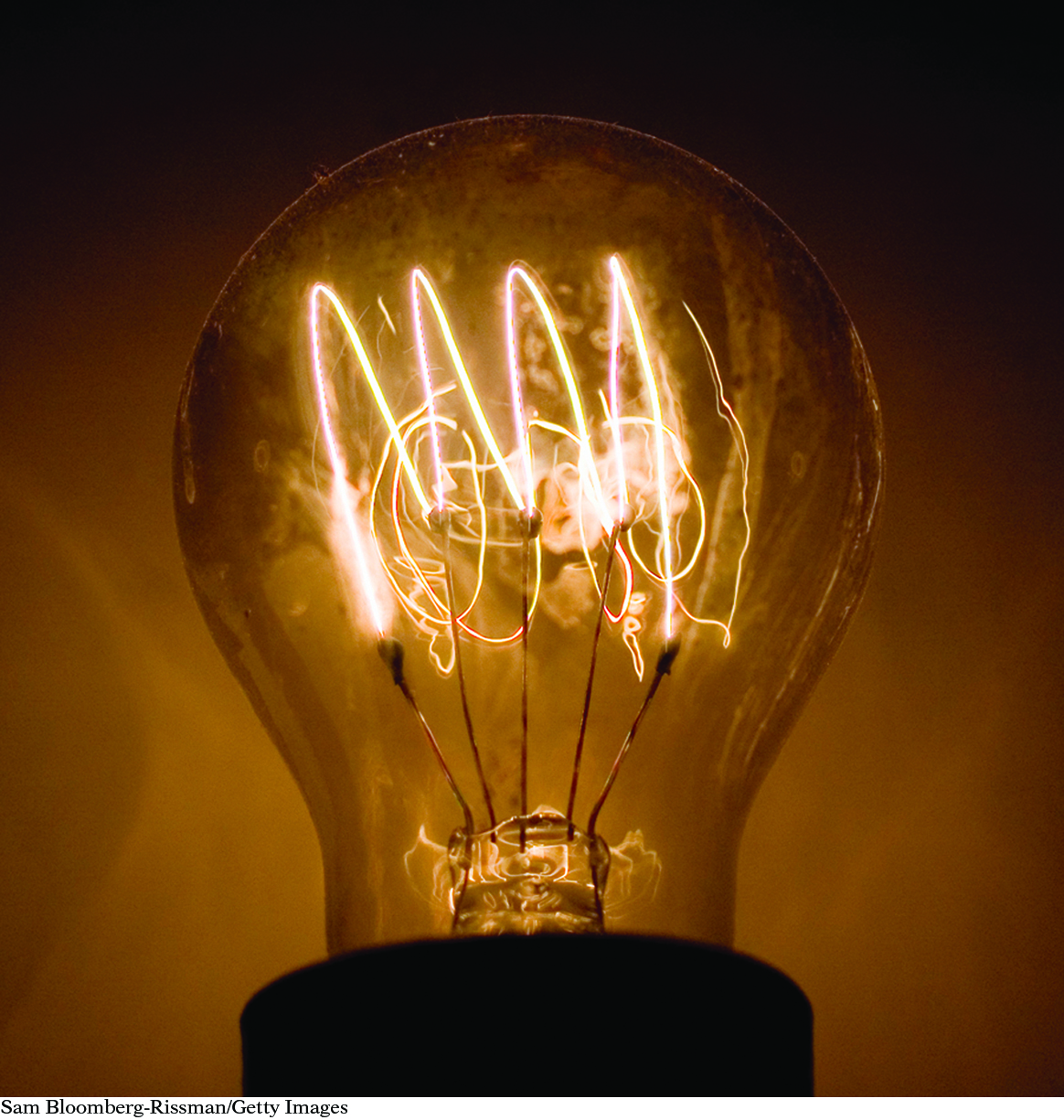
Sam Bloomberg-Rissman/Getty Images
|

Catherine Bridgman/Getty Images
|
577
As you learned in previous lessons in this unit, hot substances transfer energy to reach thermal equilibrium. So far, you have considered conduction, which relies on a hot object being in direct contact with a colder object. Radiation refers to energy that travels outward from a hot substance even when the substance is isolated. Visible light is one form of radiation.
Big Idea
Big Idea
One way that hot substances transfer energy is by the emission of light, called radiation.
RAY MODEL OF LIGHT

Light from this flashlight produces a bright spot on a surface. Notice that while the light is visible at the flashlight, the path of light is invisible between the flashlight and the surface. The light becomes visible when it strikes the surface.
Marynchenko Oleksandr/Shutterstock
|
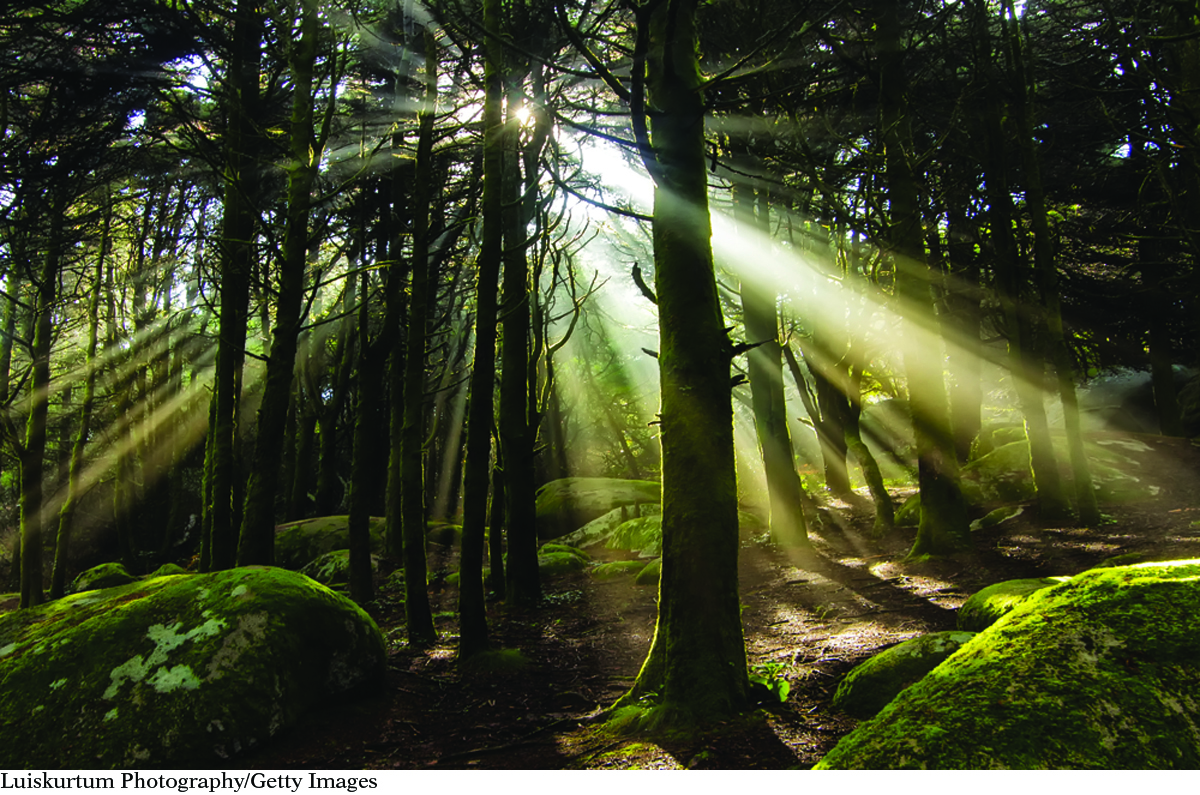
Sunbeams are visible through the trees when there is a mist of water in the air. Small particles show the path of the light.
Luiskurtum Photography/Getty Images
|
Generally, it is not possible to see the path of light from a source such as the Sun. The path of light becomes visible as a glowing sunbeam only if there are dust particles or water droplets in the air. The path of light is commonly referred to as a light ray. Light rays do not describe the complexities of light, but they do provide a simple model with which to track the path of light as it shines from the source onto an object and then to your eye.
WHITE LIGHT IS A MIXTURE OF COLORS
GEOGRAPHY CONNECTION
GEOGRAPHY
CONNECTION
Normally, we think of lightning as accompanying a thunderstorm. But volcanoes spew lots of dusty matter, which forms a plume of highly charged particles much like the droplets in a storm cloud. The clouds of particles from erupting volcanoes can unleash spectacular lightning bolts, like this one in Indonesia.
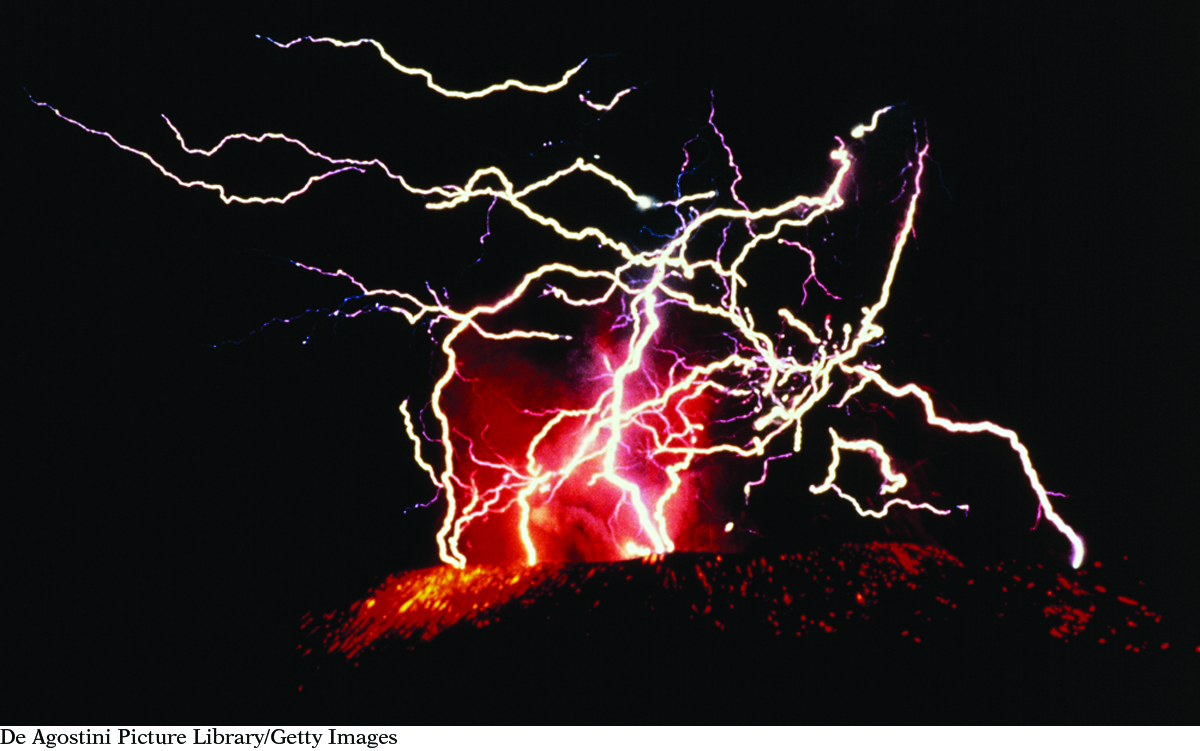
In the late 1600s, Sir Isaac Newton showed that white light produces a rainbow of colors after passing through a piece of glass in the shape of a triangular prism. At the time, other hypotheses suggested that the prism might somehow distort the light or make it less pure. However, when Newton placed a second prism in the path of the rainbow of light created by the first prism, he observed a single beam of white light. This experiment convinced Newton that the colors are already present in the light.

Reflection, Transmission, and Absorption
Reflection, Transmission, and Absorption
578
In a room that is dark and sealed off so that no light leaks in, you see nothing. Turn on the lights, and objects in the room become visible. The once invisible objects are now illuminated. Moreover, many of them are colorful even under light that appears white at the source, referred to as white light. What are the ways that white light interacts with matter to cause these perceptions of object’s visibility and color?
OPAQUE OBJECTS REFLECT LIGHT
Important to Know
Only light sources emit, or give off, their own light. Most objects only reflect light and, therefore, are not visible in a pitch-black room.
When light shines on an object, some or all of the light is reflected. Reflection of light refers to light that “bounces” off a surface. When light from one source reflects from a smooth surface, all the light rays are parallel to one another. When light reflects from a rough surface, the light rays go off in many different directions. It is typical that you can see a reflection on a smooth surface such as a mirror. You can also see a faint image of a reflection in a window. Rough surfaces do not create as clear an image because the light goes off in multiple directions.

CLEAR OBJECTS TRANSMIT LIGHT
Light passes through certain types of objects, such as glass, thin fabric, and thin sheets of plastic, by transmission. Objects that transmit light are transparent. Very little light is reflected during transmission. However, most objects do not transmit light, and are referred to as opaque. It is not possible to see through opaque objects.

|
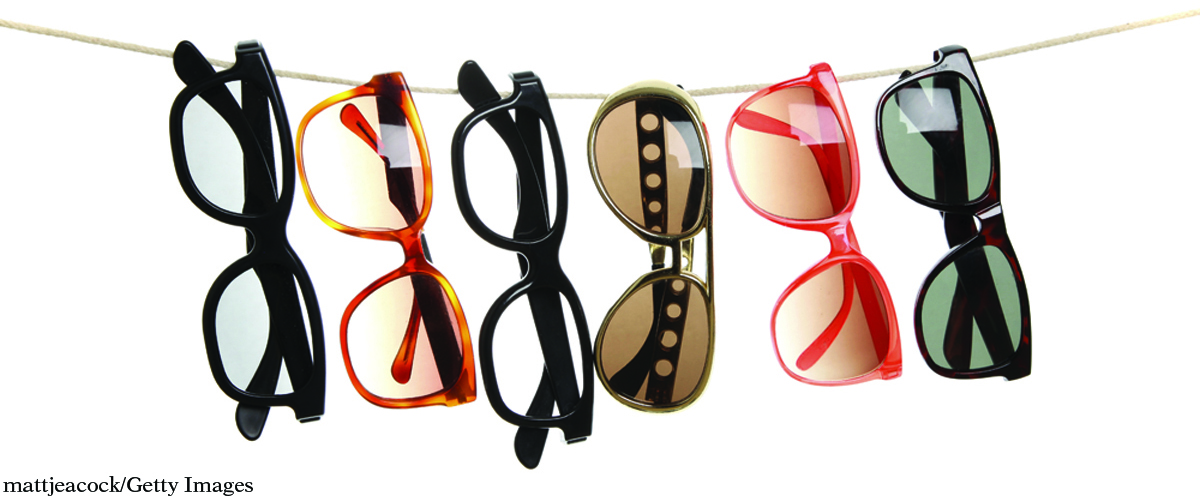
mattjeacock/Getty Images
|
579
COLORED OBJECTS PARTIALLY ABSORB LIGHT
ART CONNECTION
ART
CONNECTION
Stained-glass windows are made of glass colored by certain elements. The windows of the Cathedral of Notre-Dame in Chartres, France, are famous for a distinctive blue glass that the glassmakers used. Cobalt is the source of the blue coloring.
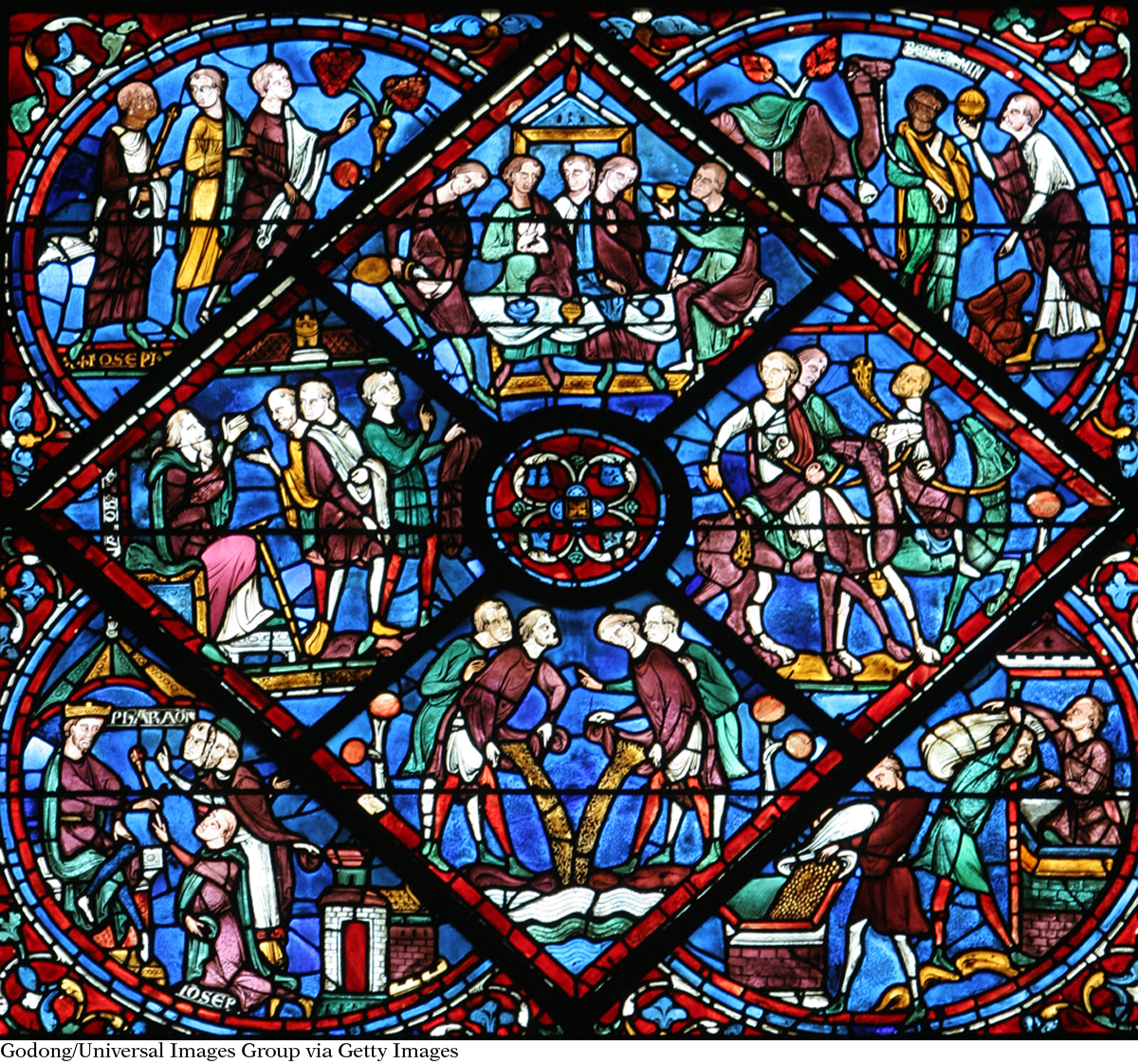
Consider green leaves. You cannot see through leaves, so light is not transmitted. If our eyes detect a green color, then it must mean that rays of green light reflect from the leaves and enter our eyes. How is it possible that you detect green when the leaves are illuminated with white light?
For green leaves, colors other than green are taken in, or absorbed, by the leaves while green light rays are reflected. This process of taking in certain colors of light is called light absorption. The light that is absorbed transfers energy to the object.

Big Idea
Big Idea
An object is colored because it reflects or transmits certain colors of light (these are the colors you see), while it absorbs other colors of light (these light rays transfer energy back to the object).
Example
Yellow Streetlamps and Car Colors
Imagine that you are walking down a street at night. The streetlamps emit yellow light.
Explain why a blue car appears black.
Explain why a yellow car appears yellow.
Solution
A blue car absorbs all colors of light except for blue light. The streetlamps emit yellow light, which is absorbed by the blue car. So, no light is reflected into your eyes, and the car appears black.
A yellow car absorbs all colors of light except for yellow light. The streetlamps emit yellow light, which is reflected by the yellow car. So, the car appears yellow as it would during the day in sunlight.
LESSON SUMMARY
LESSON SUMMARY
How can you describe light shining on matter?
KEY TERMS
emission
radiation
light ray
white light
reflection
transmission
transparent
opaque
absorption
Light is a form of energy emitted from sources such as the Sun and light bulbs. The light travels through space undetected until it strikes an object. The object can reflect, transmit, or absorb the light. Your eye detects reflected and transmitted light that travels toward you. A colored object reflects or transmits the color or colors you perceive, while it absorbs the other colors. Black objects absorb all colors. The energy from light that is absorbed by an object is transferred to the object.
580
Exercises
Reading Questions
How could you provide evidence that light is a form of energy?
Provide an explanation as to why we see colors.
Reason and Apply
What color will you see if you shine white light through a piece of thin blue plastic?
What color will you see if you shine blue light through a piece of thin blue plastic?
What color will you see if you shine white light from a flashlight onto a green car at night?
What color will you see if yellow light from a streetlamp shines on a red car at night?
Imagine that you are wearing a pair of orange-tinted sunglasses.
What color will you see when you look at an orange object? Explain your thinking.
What color will you see when you look at a blue object? Explain your thinking.
Explain how it is possible to see a sunbeam in a room that has dust in the air. Draw a ray model to show how the light path travels from its source, to the dust, and then to your eye.